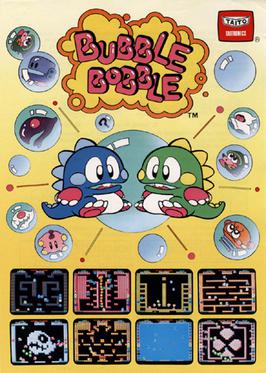
Bubble Bobble is a 1986 platform game developed and published by Taito for arcades. It was distributed in the United States by Romstar, and in Europe by Electrocoin. Players control Bub and Bob, two dragons that set out to save their girlfriends from a world known as the Cave of Monsters. In each level, Bub and Bob must defeat each enemy present by trapping them in bubbles and popping, who turn into bonus items when they hit the ground. There are 100 levels total, each becoming progressively more difficult.
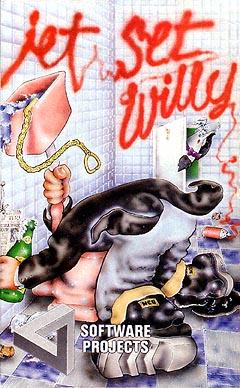
Jet Set Willy is a platform video game originally written by Matthew Smith for the ZX Spectrum home computer. It was published in 1984 by Software Projects and ported to most home computers of the time.

Wonder Boy in Monster Land, known by its original arcade release as Wonder Boy: Monster Land, is a platform video game developed by Westone Bit Entertainment and released by Sega in Japanese arcades in 1987 and for the Master System in 1988, with a number of other home computer and console ports following. The game is the sequel to the 1986 game Wonder Boy and takes place eleven years after the events in the previous game. After enjoying over a decade of peace on Wonder Land following the defeat of the evil King by Tom-Tom, later bestowed the title "Wonder Boy", a fire-breathing dragon called the MEKA dragon appeared; he and his minions conquered Wonder Land, turning it into "Monster Land". The people, helpless due to their lack of fighting skill, call for Wonder Boy, now a teenager, to destroy the monsters and defeat the MEKA dragon. Players control Wonder Boy through twelve linear levels as he makes his way through Monster Land to find and defeat the MEKA dragon. Players earn gold by defeating enemies and buy weapons, armor, footwear, magic, and other items to help along the way.
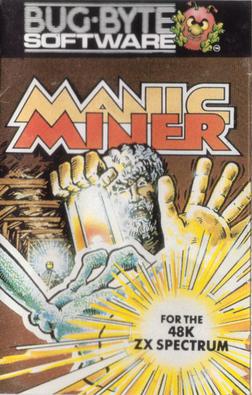
Manic Miner is a platform game written for the ZX Spectrum by Matthew Smith. It was published by Bug-Byte in 1983, then later the same year by Software Projects. The first game in the Miner Willy series, the design was inspired by Miner 2049er (1982) for the Atari 8-bit family. Retro Gamer called Manic Miner one of the most influential platform games of all time, and it has been ported to numerous home computers, video game consoles, and mobile phones.
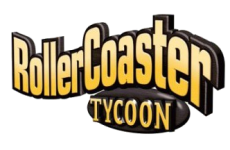
RollerCoaster Tycoon is a series of construction and management simulation games about building and managing an amusement park. Each game in the series challenges players with open-ended amusement park management and development, and allowing players to construct and customize their own unique roller coasters and other thrill rides.
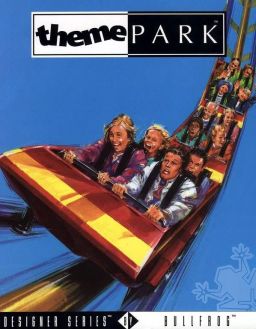
Theme Park is a construction and management simulation video game developed by Bullfrog Productions and published by Electronic Arts in 1994. The player designs and operates an amusement park, with the goal of making money and creating theme parks worldwide. The game is the first instalment in Bullfrog's Theme series and their Designer Series.

Paperboy is an arcade action game developed and published by Atari Games, and released in 1985. The player takes the role of a paperboy who delivers a fictional newspaper called The Daily Sun along a street on his bicycle. The arcade version of the game featured bike handlebars as the controller.
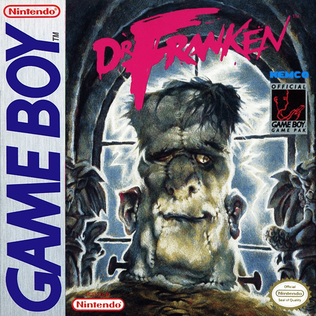
Dr. Franken is a platform game released in 1992 for the Game Boy and in 1993 for the Super Nintendo Entertainment System by Elite Systems. It was titled The Adventures of Dr. Franken for the SNES in the United States. The game features Franky, a Frankenstein's monster on a mission to collect the scattered body parts of his girlfriend, Bitsy.

RollerCoaster Tycoon 3 is a 2004 construction and management simulation video game. It is the third installment in the RollerCoaster Tycoon series, and was developed by Frontier Developments and published by Atari under the Atari Interactive label. RollerCoaster Tycoon 3 places players in charge of managing amusement parks; rides can be built or demolished, terrain and scenery can be adjusted, and prices can be controlled to keep visitors or "peeps" happy.

RollerCoaster Tycoon 2 is a 2002 construction and management simulation game developed by Chris Sawyer and published by Infogrames Interactive. Released in October 2002 as the sequel to RollerCoaster Tycoon, the game simulates the management of amusement parks.

Marvel Land is a platform game released by Namco in arcades in 1990. It runs on the Namco System 2 hardware. The game was published for the Mega Drive in 1991, with the European version renamed Talmit's Adventure. The game shares its name with the fictitious kingdom where the 1986 Japan-only Famicom game Valkyrie no Bōken: Toki no Kagi Densetsu takes place, but has no connections with it otherwise. Likewise the game has no connections with Marvel Comics or any of their associated characters either. In December 2022, the arcade version of Marvel Land was re-released exclusively in Japan on the Nintendo Switch and the PlayStation 4 on the Arcade Archives lineup of digital arcade titles. It was originally planned for worldwide release at one point but was ultimately cancelled due to licensing issues with Disney and Hamster Corporation.

Bomb Jack is a platform game published by Tehkan for arcades and later ported to home systems. The game was a commercial success for arcades and home computers. It was followed by several sequels: the console and computer game Mighty Bomb Jack, the arcade game Bomb Jack Twin, and Bomb Jack II which was licensed for home computers only.

Wonder Boy III: Monster Lair is a side-scrolling action game developed by Westone Bit Entertainment that was originally released for the arcades by Sega in 1988. It is the third game in the Wonder Boy series and the last one released for the arcade. A console adaptation was made by Hudson Soft, released in 1989 in Japan for the PC Engine CD-ROM² System and the subsequent North American release on the TurboGrafx-CD dropped the 'Wonder Boy III' title. It was also converted and released by Sega for the Mega Drive in Japan in 1990 and Europe in 1991. Both, the TurboGrafx-CD and Mega Drive versions have been re-released for the Wii Virtual Console.
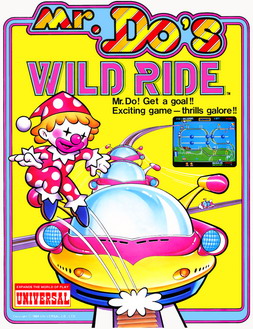
Mr. Do's Wild Ride is a platform game released in 1984 as the third in Universal's Mr. Do! arcade video game series. An MSX version was published in 1985.

Dragon's Lair: The Legend is a 1991 side-scrolling platform video game for the Nintendo Game Boy developed by Elite Systems. The game is part of the Dragon's Lair franchise and stars Dirk the Daring, who explores the world attempting to collect all 194 fragments of the mythical Life Stone. The gameplay is an extreme departure from other games in the series as it includes no enemies and aside from its protagonist, no other established characters. It does however retain the grueling difficulty that the series is known for.

Dragon's Lair is an interactive film LaserDisc video game developed by Advanced Microcomputer Systems and published by Cinematronics in 1983, as the first game in the Dragon's Lair series. In the game, the protagonist Dirk the Daring is a knight attempting to rescue Princess Daphne from the evil dragon Singe who has locked the princess in the foul wizard Mordroc's castle. It featured animation by ex-Disney animator Don Bluth.
Dragon's Lair is a video game franchise created by Rick Dyer. The series is famous for its Western animation-style graphics and complex decades-long history of being ported to many platforms and being remade into television and comic book series.
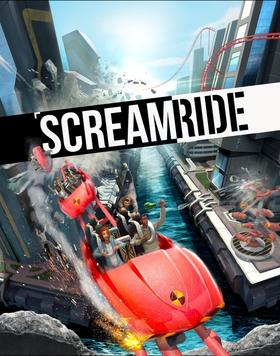
Screamride is a construction simulator and a puzzle video game developed by Frontier Developments and published by Microsoft Studios for the Xbox One and Xbox 360. The game was released worldwide in March 2015.

Planet Coaster is a construction and management simulation video game developed and published by Frontier Developments for Windows. It was released worldwide on 17 November 2016. Frontier had previously worked in the amusement park construction and management genre with RollerCoaster Tycoon 3, Thrillville, Thrillville: Off the Rails, and Zoo Tycoon. A version for PlayStation 4, Xbox One, and Xbox Series X/S, known as Planet Coaster: Console Edition, was released worldwide on 10 November 2020. The PlayStation 5 version was released in North America and Australia on 12 November 2020 and in Europe on 19 November 2020. A macOS version, developed by Aspyr, was later released on 17 November 2020 on both Steam and Mac App Store.

RollerCoaster Tycoon Classic is a construction and management simulation video game developed by Origin8 Technologies and published by Atari. The game's initial release is a port of both RollerCoaster Tycoon and RollerCoaster Tycoon 2 combined into a single game. Both games were amusement park management simulators created by Chris Sawyer for the PC. RollerCoaster Tycoon Classic was released for Android and iOS in December 2016 and for Microsoft Windows and macOS in September 2017.





















